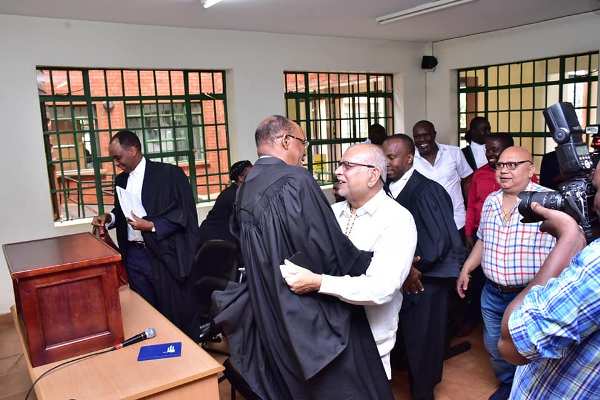A telecom mast/Courtesy photo
Emmanuel Businge, the Fort Portal Deputy Resident City Commissioner in charge of the Central Division has halted the construction of a telecom mast in a residential area citing the lack of the necessary documents.
He announced the decision at a meeting held at the proposed mast construction site mast in Rwengoma C 1 village Rwegoma Ward Fort Portal City between ATC Uganda Limited, which was contracted to erect the mast, residents, and St. Andrew’s Church of Uganda that owns the land.
The meeting tasked the site engineer, Godfrey Gasyowere to produce the Environment Impact Assessment-EIA report, permit from the National Environment Management Authority-NEMA, and approved construction plans in vain.
Gasyowere only presented a receipt that indicated the fees, which the company had paid to Fort portal council as inspection fees.
It was also discovered that the company had started constructing the mast without approval from the Fort portal physical planner.
Olivia Bahwayo Busobozi, the Physical Planner for Fort Portal City, said that they have not yet approved the mast construction since the contractor has not yet submitted all the required documents.
It’s from this background that the RCC stopped the mast construction until the company puts in place all the requirements.
The residents of Rwengoma C 1 village where the mast is to be built are contesting its construction in their area, saying it is hazardous to their health. The residents want it to be relocated to another area away from their residences.
According to the Uganda Communications Commission which regulates the telecommunications sector, so far, there is no evidence that indicates that base stations are dangerous to the surrounding community.
This is with respect to the RF energy from the emitting sources (antennas), as they operate at low power, produce low RF exposure levels in public areas, and are specifically designed for the environment they are located in.
UCC also indicates that there is no prescribed distance at which a base station should be located from human dwellings. However, there are maximum exposure levels prescribed for both the public and occupational workers.
However, according to the World Health Organization, Wireless radiation has now been listed as a possible carcinogen. The World health body indicates that cell phone mast radiation causes an increase in the permeability of the blood-brain barrier in a nerve cell and an increase in oxidative stress.
-URN





